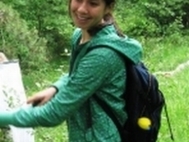
Snails in the desert: Theba (Gastropoda: Helicidae) along the Atlantic coast of NW Africa
The spatial subdivision of species often plays a pivotal role in speciation. Across their entire range, species are rarely panmictic and crucial consequences of spatial subdivision are (1) random genetic drift including historical factors, (2) uniform selection, and (3) divergent selection. Each of these consequences may result in geographic variation and eventually reproductive isolation, but their relative importance in speciation is still unclear. In this study, we used a combination of genetic, morphological, and climatic data to obtain a comprehensive picture of differentiation among three closely related, parapatrically distributed taxa of the land snail genus Theba occurring along the Atlantic coasts of South Morocco and Western Sahara. We conducted Mantel and partial Mantel tests to relate phenotypic and genotypic variation of these species to geography and/or climate. As null hypothesis for an evolutionary scenario, we assumed nonadaptive speciation and expected a pattern of isolation by distance among taxa. Rejection of the null hypothesis would indicate isolation by environment due to adaptation. Generally, genetic drift plays an important role but is rarely considered as sole driver of speciation. It is the combination of drift and selection that predominantly drives speciation. This study, however, provides a potential example, in which nonadaptive speciation, that is, genetic drift, is apparently the main driver of shaping the diversity of Theba in NW Africa. Restriction of gene flow between populations caused by geographic isolation probably has played an important role. Climate oscillations during the Plio-and Pleistocene may have led to repeated ecological changes in NW Africa and disruptions of habitats promoting differentiation by geographic isolation. The inferred evolutionary scenario, however, did not fully explain the incongruence between the AFLP-andmtDNA-tree topologies. This incongruence might indicate past hybridization among the studied Theba forms.






